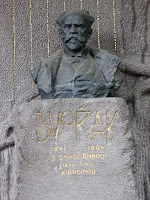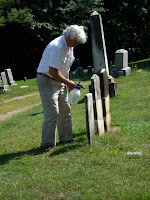Acutely endangered sites range from a major academic building on the campus of the University of Wisconsin, to Boston City Hall, to a Christian Science church in Washington, D.C. To be sure, many of these structures are difficult to maintain and to reconcile with modern energy-conservation practices. Still, listening to those who would dismantle this heritage, one at times has the feeling that this is an emotional act of revenge, rather than a rational one of renovation or reconstruction.
The case of the Christian Science church would be amusing if there were not more at stake: Preservationists had the building designated a historic landmark, and now church members are trying to have that designation removed so that they can demolish their place of worship. (Presumably, if it were a vessel of flesh and blood rather than concrete and steel, it could just heal itself.) Fortunately, we live in a society that separates church and state, so church members will have to demonstrate not simply that they don't like their building any more (for they are of course free to sell it and relocate elsewhere), but that their practice of religion will be "substantially burdened" if the building is not altered. Good luck.
One church member laments,
"We think it says, 'Stay away.' Something goes on in here that they don't want to get outside, which is exactly wrong for all Christianity. We don't think the architecture conveys taking the Word to the people." [. . . . ]
"Nothing expresses a church's religious exercise more than its architecture. And this architecture does not express our theology and our exercise. Brutalism is not our religious expression."
Leaving aside all the architecturally, theologically, and historically problematic aspects of that statement: If brutalism was not the ideal style to communicate the message of a welcoming church, but then why didn't the church think of that when it commissioned the building, which was presumably intended to last for some time? Is it impossible for the current generation to understand the reasoning and sentiments of the preceding one? Does not the teaching of the church count for more than the shape of the building in which it takes place? And, if the architecture was not a burden to the practice of religion when the structure was built, how can it be so now? Once upon a time, believers were willing to suffer martyrdom for their faith, but nowadays aesthetic discomfort resulting from changing tastes evidently constitutes intolerable oppression. Call Human Rights Watch.
As we have seen, the University of Massachusetts has been dismantling the vernacular architectural remnants of its agricultural heritage, causing community members, alumni, and preservationists to fear in particular for the fate of its modernist structures, which, like their counterparts elsewhere, are endangered.
It is therefore both ironic and encouraging to see that Lexington, Massachusetts, the cradle of the American Revolution, has no problem embracing its modernist heritage. As a press release to the Massachusetts preservation listserve announced, there will be a symposium on that happy coexistence on 17 October:
Mid-Century Modernism: Lexington's Second Revolution
When people think of architecture in Lexington, 'modern' may not be
the style that comes to mind. However, in the post-war years, a
building boom led to the development of nine distinct neighborhoods
with utopian aspirations: to create low-cost modern houses that
blended with their surroundings and took advantage of the hilly
topography of their sites, natural light, and access to the outdoors.
These close-knit communities shared common land amenities and
governance, and still flourish today. And, more significantly, their
contemporary style houses are one of the most vital and well-preserved
architectural features of Lexington.
(details)
It's modernist domestic architecture and not brutalist public structures, to be sure. But if Lexington can embrace its modernist heritage, why can't we? It might be, well, a revolutionary change.






























